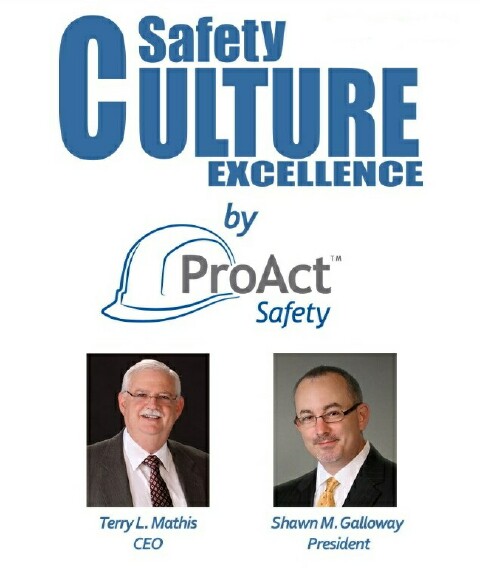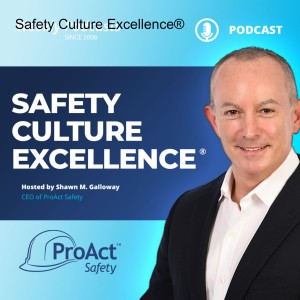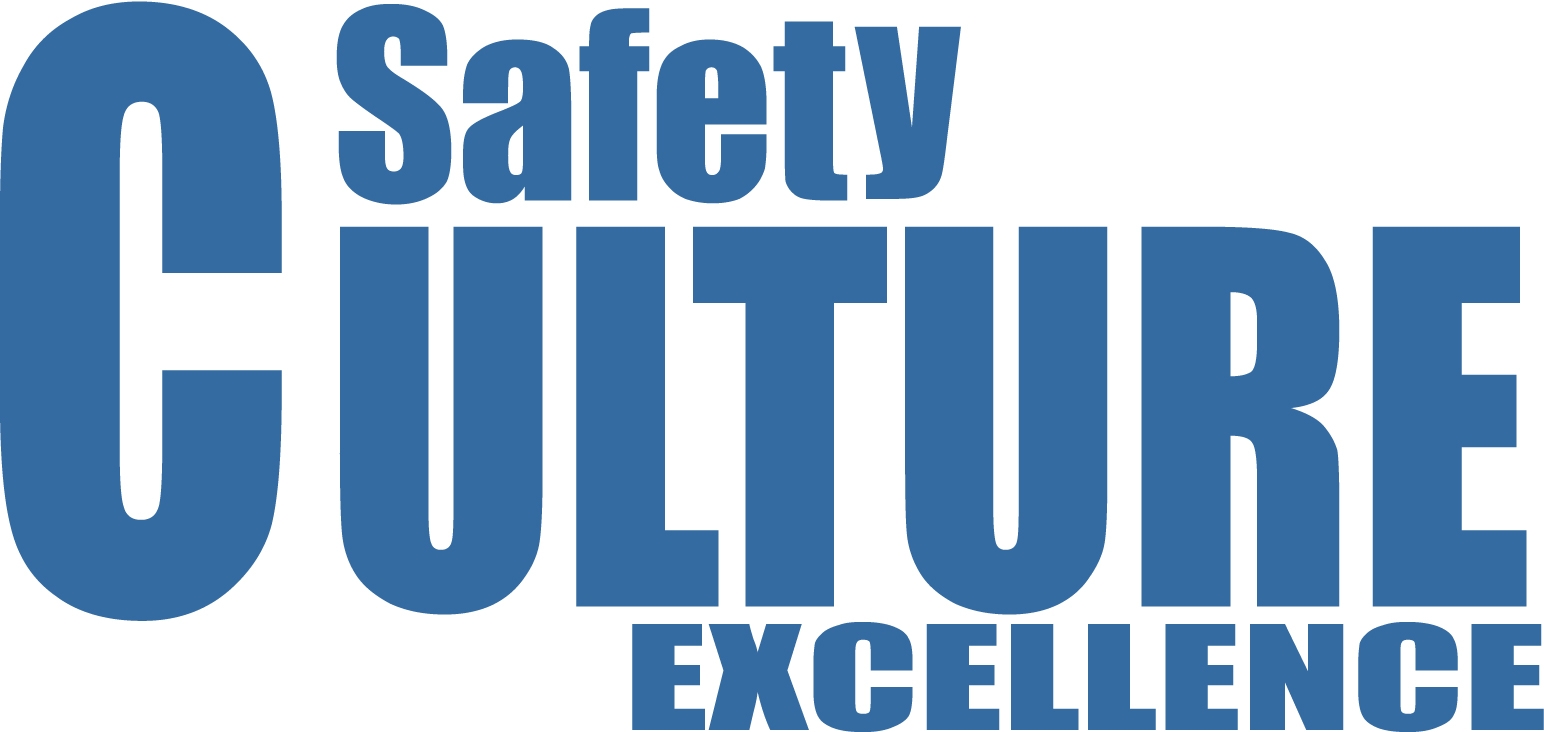Episodes

Monday Dec 02, 2013
318 - Safety Strategy: What Great Leaders Do Well
Monday Dec 02, 2013
Monday Dec 02, 2013
Greetings everyone, this podcast recorded while in Cotulla, TX. I’d like to share an article I wrote, published November 2013 in OHS Magazine. The published article can either be found on the magazine’s website or under Insights at www.ProActSafety.com.
I hope you enjoy the podcast this week. If you would like to download or play on demand our other podcasts, please visit the ProAct Safety’s podcast website at: http://www.safetycultureexcellence.com. If you would like access to archived podcasts (older than 90 days – dating back to January 2008) please visit www.ProActSafety.com/Store. For more detailed strategies to achieve and sustain excellence in performance and culture, pick up a copy of our book, STEPS to Safety Culture Excellence - http://proactsafety.com/insights/steps-to-safety-culture-excellence
Have a great week!
Shawn M. Galloway
ProAct Safety

Wednesday Nov 27, 2013
Leading vs. Lagging Indicators in Safety
Wednesday Nov 27, 2013
Wednesday Nov 27, 2013
As more and more leaders and safety professionals realize the limitations of reactive safety, they search for leading indicators to help them manage safety more proactively. This thinking fueled the concept that lagging indicators alone, are not truly representative of safety performance, nor are they predictive or prescriptive.
The first round of so-called “leading indicators” was little more than a measurement of safety-related activities: hours of safety training, attendance at safety meetings, participation in safety programs, etc. OSHA’s crackdown on incentives that could potentially suppress reporting of accidents drove many organizations to base their incentives on these activity metrics rather than simply not having an accident.
When behavior-based safety became the rage, the measurement of behaviors from observations came to be thought of as a leading indicator. As safety culture became a buzz phrase, perception surveys gained in popularity and came to be considered another potential leading indicator. The search for meaningful leading indicators goes on because no one of these has proven adequate in predicting and preventing injuries.
Where none of these alone succeed, all of them together potentially can. A balanced-scorecard approach in which the metrics not only complement, but predict each other has proven quite effective in proactively predicting how to prevent accidents. When you measure how much activity it takes to change perceptions, how much of a change in perceptions it takes to change behaviors, and how much behavior change it takes to change the lagging indicators, you begin to truly measure the effectiveness of safety efforts. Just as balanced scorecards have revolutionized strategic management, with our most successful clients, balanced scorecards for safety have proven to have a transformational impact on safety management. How balanced are your measurements?
-Terry L. Mathis
Terry L. Mathis is the founder and CEO of ProAct Safety, an international safety and performance excellence firm. He is known for his dynamic presentations in the fields of behavioral and cultural safety, leadership, and operational performance, and is a regular speaker at ASSE, NSC, and numerous company and industry conferences. EHS Today listed Terry as a Safety Guru in ‘The 50 People Who Most Influenced EHS in 2010, 2011 and 2012-2013. He has been a frequent contributor to industry magazines for over 15 years and is the coauthor of STEPS to Safety Culture Excellence, 2013, WILEY.

Monday Nov 25, 2013
317 - Licensing and Royalty Fees Can Blunt Safety Advances
Monday Nov 25, 2013
Monday Nov 25, 2013
Greetings everyone, this podcast recorded while in Fredericksburg, TX. I’d like to share an article I wrote, published September 2013 in ISHN Magazine. The published article can either be found on the magazine’s website or under Insights at www.ProActSafety.com.
I hope you enjoy the podcast this week. If you would like to download or play on demand our other podcasts, please visit the ProAct Safety’s podcast website at: http://www.safetycultureexcellence.com. If you would like access to archived podcasts (older than 90 days – dating back to January 2008) please visit www.ProActSafety.com/Store. For more detailed strategies to achieve and sustain excellence in performance and culture, pick up a copy of our book, STEPS to Safety Culture Excellence - http://proactsafety.com/insights/steps-to-safety-culture-excellence
Have a great week!
Shawn M. Galloway
ProAct Safety

Wednesday Nov 20, 2013
Can You Do Too Much Safety Training?
Wednesday Nov 20, 2013
Wednesday Nov 20, 2013
This is a follow-up to a previous blog that can be accessed here: http://www.safetycultureexcellence.com/2013/09/18/more-is-not-better-only-better-is-better/
There seems to be naïve assumption that if training does solve a problem the answer is more training. It is NOT! The answer is better training. Overtraining is a serious problem in the safety programs of several industries. Workers are literally bombarded with information that is not sticky. They leave training sessions confused instead of enlightened. They feel like they are trying to drink from a fire hose.
One problem is that training is designed to limit legal exposure rather than effectively improve safety. New employee orientation on project jobsites is often a massive information dump, rather than a focused effort to eliminate the most common safety challenges. In fact, most safety training takes a blanket vs. a focused approach. The training tries to cover every possible risk rather than focusing on the risks that have historically caused the most injuries.
Blanket-type training is notoriously non-memorable. Effective training creates awareness that is sticky, (easy to remember) so that workers can easily carry the knowledge in their memory until it becomes habitual. Test or ask your trainees if they can recite from training what they should do to improve safety. Ask them again a week or a month after training. If they can’t remember, the problem lies in the quality, not the quantity of training.
-Terry L. Mathis
Terry L. Mathis is the founder and CEO of ProAct Safety, an international safety and performance excellence firm. He is known for his dynamic presentations in the fields of behavioral and cultural safety, leadership, and operational performance, and is a regular speaker at ASSE, NSC, and numerous company and industry conferences. EHS Today listed Terry as a Safety Guru in ‘The 50 People Who Most Influenced EHS in 2010, 2011 and 2012-2013. He has been a frequent contributor to industry magazines for over 15 years and is the coauthor of STEPS to Safety Culture Excellence, 2013, WILEY.

Monday Nov 18, 2013
316 - Mergers and Acquisitions: Aligning Your Next Culture
Monday Nov 18, 2013
Monday Nov 18, 2013
Greetings everyone, this podcast recorded while in Craig, CO. I’d like to share an article I wrote, published September 2013 in BIC Magazine. The published article can either be found on the magazine’s website or under Insights at www.ProActSafety.com.
I hope you enjoy the podcast this week. If you would like to download or play on demand our other podcasts, please visit the ProAct Safety’s podcast website at: http://www.safetycultureexcellence.com. If you would like access to archived podcasts (older than 90 days – dating back to January 2008) please visit www.ProActSafety.com/Store. For more detailed strategies to achieve and sustain excellence in performance and culture, pick up a copy of our book, STEPS to Safety Culture Excellence - http://proactsafety.com/insights/steps-to-safety-culture-excellence
Have a great week!
Shawn M. Galloway
ProAct Safety

Wednesday Nov 06, 2013
The Danger of Compliance
Wednesday Nov 06, 2013
Wednesday Nov 06, 2013
The goal of many safety programs is to get all workers and the workplace into compliance with applicable rules and regulations. This is a necessary and foundational step in any effective safety effort. However, if the goals and progression stop at compliance, this can cause crucial problems for the future. Once the workplace passes muster and workers know and adhere to the rules, then what? The next steps in safety must take the organization beyond the performance levels achieved through compliance. These steps require much more of workers than simply following the rules.
Beyond compliance is excellence through safety culture. An excellent safety culture is one in which workers are engaged, not simply conforming. Worker engagement in safety is seldom accomplished with the tools of compliance. A new set of tools that challenges workers to belong, participate, and expend creative energy is needed. The tools of compliance cannot be used or even adapted to meet these challenges. In fact, the tools used by many organizations to accomplish compliance can actually hamper or kill employee engagement. A work force can be policed into compliance but must be coached into excellence.
Failure to change from safety cops to safety coaches can stop the progression of safety performance in its tracks. Workers will develop a “good enough” attitude toward safety if there is no reason to go above and beyond. They will not buy in if there is no compelling rationale. They will not feel part of the effort if there are no involvement opportunities. They will never own the safety-excellence effort if they are not allowed to help create it. Recognizing the point at which compliance needs to give way to excellence is the key to continuous improvement in safety.
-Terry L. Mathis
Terry L. Mathis is the founder and CEO of ProAct Safety, an international safety and performance excellence firm. He is known for his dynamic presentations in the fields of behavioral and cultural safety, leadership, and operational performance, and is a regular speaker at ASSE, NSC, and numerous company and industry conferences. EHS Today listed Terry as a Safety Guru in ‘The 50 People Who Most Influenced EHS in 2010, 2011 and 2012-2013. He has been a frequent contributor to industry magazines for over 15 years and is the coauthor of STEPS to Safety Culture Excellence, 2013, WILEY.

Monday Nov 04, 2013
314 - Competitive Safety: Breaking the Mold
Monday Nov 04, 2013
Monday Nov 04, 2013
Greetings everyone, this podcast recorded while in Austin, TX. I’d like to share an article written by Terry L. Mathis, published August 2013 in EHS Today Magazine. The published article can either be found on the magazine’s website or under Insights at www.ProActSafety.com.
I hope you enjoy the podcast this week. If you would like to download or play on demand our other podcasts, please visit the ProAct Safety’s podcast website at: http://www.safetycultureexcellence.com. If you would like access to archived podcasts (older than 90 days – dating back to January 2008) please visit www.ProActSafety.com/Store. For more detailed strategies to achieve and sustain excellence in performance and culture, pick up a copy of our book, STEPS to Safety Culture Excellence - http://proactsafety.com/insights/steps-to-safety-culture-excellence
Have a great week!
Shawn M. Galloway
ProAct Safety

Wednesday Oct 30, 2013
Little Things: The Biggest Things in Safety
Wednesday Oct 30, 2013
Wednesday Oct 30, 2013
It is logical to begin a safety effort by addressing the risks with the greatest probability for causing injuries and the highest severity potential. However, it is imperative that when the greater risks are addressed that the next ones in line get the new focus. If an organization ever develops the mindset that they have handled the big things and all that is left are little things, not worth the bother, this is a formula for disaster. Many rude wake-up calls have come via a rash of accidents caused by these “little things.”
Accidents are, after all, ambushes. If we saw them coming we would have avoided them. So it logically follows that anything we don’t keep our eyes on has the potential of ambushing us. Some experts suggest that workers get injured when they fail to recognize the risk. But underestimating the risk is equally dangerous.
Many have adopted a goal or vision of “zero injuries.” If properly explained and implemented, such a goal can keep organizations continuously addressing smaller risks as they successfully eliminate or manage larger ones. When accident rates go down, the effort does not stop; it simply refocuses itself on the next tier of risks. True excellence in safety is quite different from simply pretty good. No risk should ever be considered a “little thing.”
-Terry L. Mathis
Terry L. Mathis is the founder and CEO of ProAct Safety, an international safety and performance excellence firm. He is known for his dynamic presentations in the fields of behavioral and cultural safety, leadership, and operational performance, and is a regular speaker at ASSE, NSC, and numerous company and industry conferences. EHS Today listed Terry as a Safety Guru in ‘The 50 People Who Most Influenced EHS in 2010, 2011 and 2012-2013. He has been a frequent contributor to industry magazines for over 15 years and is the coauthor of STEPS to Safety Culture Excellence, 2013, WILEY.

Monday Oct 28, 2013
313 - Who Should Develop Corporate Safety Strategy?
Monday Oct 28, 2013
Monday Oct 28, 2013
Greetings everyone, this podcast recorded while in Covington, KY. I’d like to share an article I wrote, published August 2013 in OH&S Magazine. The published article can either be found on the magazine’s website or under Insights at www.ProActSafety.com.
I hope you enjoy the podcast this week. If you would like to download or play on demand our other podcasts, please visit the ProAct Safety’s podcast website at: http://www.safetycultureexcellence.com. If you would like access to archived podcasts (older than 90 days – dating back to January 2008) please visit www.ProActSafety.com/Store. For more detailed strategies to achieve and sustain excellence in performance and culture, pick up a copy of our book, STEPS to Safety Culture Excellence - http://proactsafety.com/insights/steps-to-safety-culture-excellence
Have a great week!
Shawn M. Galloway
ProAct Safety

Friday Oct 25, 2013
Is Your Safety Program Viral or Vile?
Friday Oct 25, 2013
Friday Oct 25, 2013
How many of your employees brag about the safety program and are excited about their participation? How many would rather pay their own money to not participate in or attend safety events? Engagement is accepted as an important indicator of the culture and the shared priority or value of safety. How many excited and willing participants do you have in your safety culture? How many individuals are eager to create and star-in a video to show precisely how proud they are? Weatherford found some.
As I’m currently traveling the many global oil fields to assess the major contractors' cultures of a major Oil and Gas Operator client, I’m exposed to some similar and some radically different approaches to safety. All of the organizations I’m interviewing have mature safety programs and evolving cultures around safety. Not all have videos they can point me to that outlines an approach they are proud of.
In some recent interviews, several individuals directed me to a video to learn more about a particular approach within their company, Weatherford. When the video was first brought to my attention in 2012, I was impressed, but not as impressed as when over a year later, across the world from the group that created it, others were bragging about it. To see this video, visit this YouTube link: http://youtu.be/i1yJgRJ4za4
I should point out that other organizations have videos created to highlight the pride in safety and accomplishments. Not all have reached a point of becoming viral. On a side note, I find it shameful that the majority of videos having to do with safety that become viral, are injury-related. I received one today that was intended to (according to accompanying message) provoke laughter. I stopped it half-way through as it was questionable whether the Darwin-award winners survived or not. I’m surprised people find decisions that led to major injury or death, funny.
Do your safety programs, videos and information make people smile, create interest and facilitate engagement? Or, do they prompt cringing, create disengagement and turn people off to the message? Safety should be viewed as more than a condition of employment. Safety adds value to the job site, personnel involved, and the families they are working to support. When people enjoy the content, they might (but rarely) share if they have the extra time. When they are a part of the content and it is entertaining and adds value, they make time to share.
- Shawn M. Galloway
Shawn M. Galloway is the President of ProAct Safety and the coauthor of two books, his latest published Feb 2013 by Wiley is STEPS to Safety Culture Excellence. As an internationally recognized safety excellence expert, he has helped hundreds of organizations within every major industry to achieve and sustain excellence in performance and culture. He has been listed in this year’s National Safety Council Top 40 Rising Stars, EHS Today Magazine’s 50 People Who Most Influenced EHS and ISHN Magazine’s POWER 101 – Leaders of the EHS World and again in the recent, elite list of Up and Coming Thought Leaders. In addition to the books, Shawn has authored over 300 podcasts, 100 articles and 80 videos on the subject of safety excellence in culture and performance.

